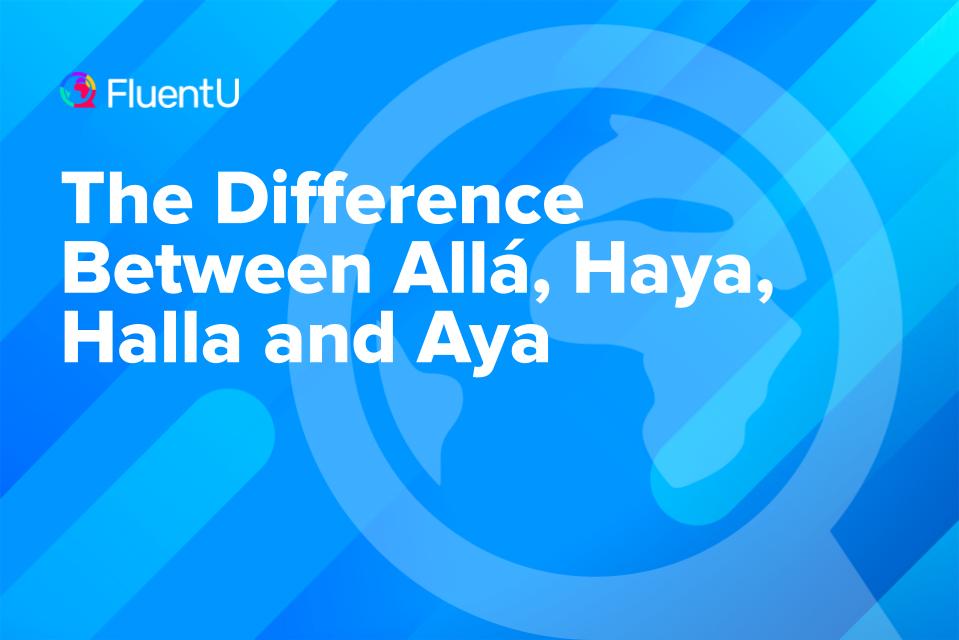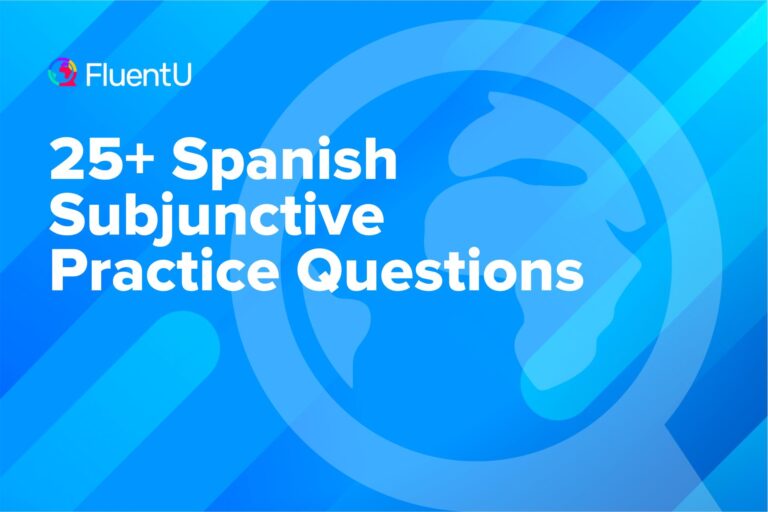The Difference Between Allá, Haya, Halla and Aya

The Spanish words allá, haya, halla and aya cause a lot of confusion for many Spanish learners—and even native speakers. Because while they look and sound somewhat similar, they all have different meanings and uses. And besides the two verbs, they’re all different parts of speech.
In this post, you’ll learn what each little word means and how to distinguish between them.
Download: This blog post is available as a convenient and portable PDF that you can take anywhere. Click here to get a copy. (Download)
1. Allá — There, over there
Allá is the only adverb in this group of commonly-confused words. It’s an adverb of place meaning “there” or “over there.”
It’s also the only one of the four that has an accent mark and is stressed on the last syllable.
Let’s see a few examples:
Dame aquella naranja de allá. (Give me that orange over there.)
Allá vamos. (There we go.)
Hay un niño pequeño allá. (There is a small child over there.)
2. Haya — There is/are
Haya actually has two very different meanings depending on whether it’s used as a noun or a verb.
Its most common form is as a verb, coming from the infinitive haber. It’s the present subjunctive form of the impersonal use of the verb meaning “there is/are.” It’s also used as an auxiliary verb to create the present perfect subjunctive.
No creo que haya un banco cerca que esté abierto tan tarde. (I don’t think there’s a bank nearby that’s open this late.)
Es triste que haya tantas familias pobres aquí. (It’s sad that there are so many poor families here.)
Espero que Anna haya aprobado el examen. (I hope Anna has passed the exam.)
Haya is also a feminine noun meaning “beech tree.”
Hay una gran haya en mi jardín. (There’s a big beech tree in my garden.)
El haya es originaria de Europa, Asia y América del Norte. (The beech tree is native to Europe, Asia and North America.)
You might have noticed that although it’s a feminine noun, we used the masculine el (the) in front of the singular form of the noun:
This is because haya is a feminine noun starting with an /a/ sound that carries the voice stress of the word. Spanish doesn’t like it when la is followed by one of these words, so it changes la for el.
As a feminine word, all the adjectives and determiners around it will also be feminine (and so will the definite article in the plural).
Esta haya bonita tiene 30 metros de alto. (This beautiful beech tree is 30 meters tall.)
Las hayas son plantas caducifolias. (Beech trees are deciduous plants.)
3. Halla — Find/s, discover/s, calculate/s
Halla can be two different forms of the verb hallar (to find, to discover, to calculate).
On the one hand, it’s the third person singular of the present indicative (he/she/it finds).
El que busca, halla. (The one who seeks finds.)
El pirata halla un tesoro. (The pirate finds/discovers a treasure.)
It’s also the second person singular of the imperative. The imperative is used for commands, so it’s very common to see this word in math problems.
Halla la hipotenusa del triángulo. (Find the hypotenuse of the triangle.)
Halla la velocidad del coche. (Calculate the speed of the car.)
4. Aya — Governess
This word only has one meaning: governess. However, you should bear in mind it behaves just like el haya, i.e., it’s a feminine noun starting with an /a/ sound that carries the voice stress of the word.
Therefore, it uses the masculine el (the) when in the singular form, but uses feminine adjectives and determiners.
El aya le dijo que guardara silencio. (The governess told her to remain silent.)
La vieja aya es muy severa. (The old governess is very strict.)
Esta es mi aya favorita. (This is my favorite governess.)
The Source of Confusion Around Halla, Haya, Aya and Allá
There are two main reasons why these words are confusing in Spanish, both for native speakers and Spanish learners.
The first reason is that three of them—haya, halla and aya—are homophones, which means that they’re all pronounced the exact same way. As a result, without any context, it’s difficult to decipher which word is being spoken.
The second reason has to do with spelling. Since the y and ll are pronounced the same and the h is silent, it’s very easy to confuse the spelling of these words.
Try to drill the spelling into your memory, and remember that allá is stressed on the last syllable and therefore needs an accent.
Fortunately, you’ll usually hear or see these words in context. To overcome their sources of confusion, pay attention to the context and remember what you’ve learned about each word!
If you want to get more exposure to commonly-confused words like these, you can use a language learning program like FluentU.
FluentU takes authentic videos—like music videos, movie trailers, news and inspiring talks—and turns them into personalized language learning lessons.
You can try FluentU for free for 2 weeks. Check out the website or download the iOS app or Android app.
P.S. Click here to take advantage of our current sale! (Expires at the end of this month)

As you can see, mastering these four words can be a bit tricky. But now that you’ve learned their spelling and their meaning, it should be much easier to tell them apart.
Now try to think of sentences where you would use one or more of these four words and put your knowledge to the test!
Download: This blog post is available as a convenient and portable PDF that you can take anywhere. Click here to get a copy. (Download)
And One More Thing…
If you've made it this far that means you probably enjoy learning Spanish with engaging material and will then love FluentU.
Other sites use scripted content. FluentU uses a natural approach that helps you ease into the Spanish language and culture over time. You’ll learn Spanish as it’s actually spoken by real people.
FluentU has a wide variety of videos, as you can see here:

FluentU brings native videos within reach with interactive transcripts. You can tap on any word to look it up instantly. Every definition has examples that have been written to help you understand how the word is used. If you see an interesting word you don’t know, you can add it to a vocab list.

Review a complete interactive transcript under the Dialogue tab, and find words and phrases listed under Vocab.

Learn all the vocabulary in any video with FluentU’s robust learning engine. Swipe left or right to see more examples of the word you’re on.

The best part is that FluentU keeps track of the vocabulary that you’re learning, and gives you extra practice with difficult words. It'll even remind you when it’s time to review what you’ve learned. Every learner has a truly personalized experience, even if they’re learning with the same video.
Start using the FluentU website on your computer or tablet or, better yet, download the FluentU app from the iTunes or Google Play store. Click here to take advantage of our current sale! (Expires at the end of this month.)







